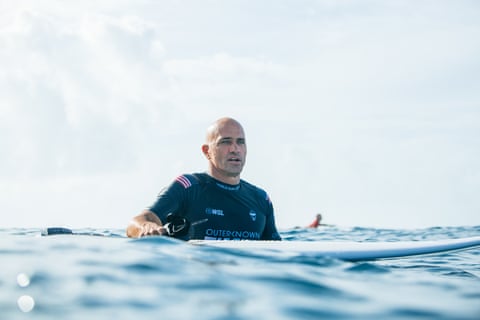After 11 world titles, 56 event wins and more than 30 years of professional surfing, Kelly Slater remains one of the best in the world – aged 51. How? “With a cane,” the American chuckles. “Beating them off, you know?”
It is a remarkable tale of sporting longevity, from the man widely considered the greatest surfer of all time. Slater won his first world title at 20, in 1992. He’s still winning events all these decades later. Slater likes to joke, but his tone becomes serious as he reflects on his most recent victory and emotion wells inside him.
“It was a really emotional time for me,” he says. “I’ve actually had people around the world over the past year tell me that when they watched me win that contest they cried – when they didn’t even know me. It really felt like something supernatural, something special in my life.”
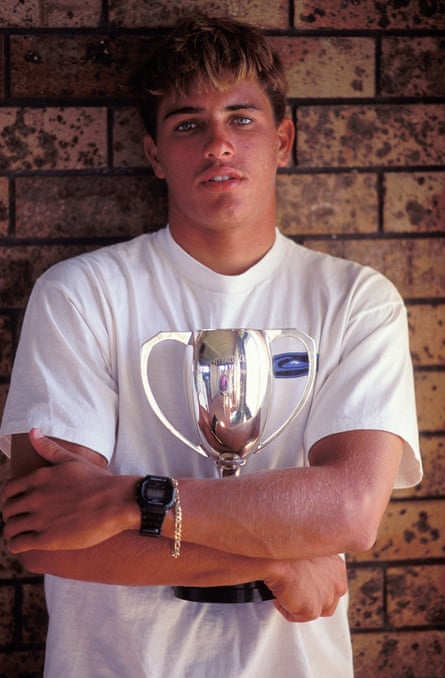
Slater last won a world title in 2011. He continued winning heats in subsequent years, but began to flirt with retirement as his form dipped and a new generation became the dominant force. A plan to retire at the end of 2019 was postponed, but questions lingered over whether it was time for Slater to hang up his competition rash-vest.
Last January at Pipeline, a heaving wave on Hawaii’s north-shore, Slater dispelled any doubts. Facing off against local wildcard Barron Mamiya in the round of 16, Slater was trailing with less than 10 seconds on the clock. But in a stroke of fortune of the kind that has characterised his career, a hefty wave emerged just in time. Slater pulled into a barrel as the buzzer sounded, ending the heat with a nine-point ride to beat Mamiya.
It was a classic Slater moment. “The Goat [greatest of all time] doing Goat things,” said one commentator on the event broadcast. “Sensei Slater does it again,” added another.


After that victory, the event title seemed predestined. Slater ultimately beat Seth Moniz in the final; Moniz’s father, Tony, was a rival to Slater in the 1990s. Slater won his first Pipeline Masters in 1992 – 30 years later, he had won yet again.
“It’s funny, I sort of forgot that [span of time] until you brought it up,” he says. Before the event, a friend of his was documenting the surfer’s journey. “He had an interview with me where I’m talking about how I won it the first year in ’92, whether I could do it again, how it would be 30 years,” he says. “I said something like: ‘I don’t know if I have it in me.’”
Pipeline has been a defining wave throughout Slater’s career – a wave that has defined him as he in turn defined an era of surfing. “To think about what 30 years is – when I was a kid, 30 years was ancient,” Slater says. “I won the most important event in my life, 30 years apart. It makes me want to cry. It’s hard to put into words how important this wave and this competition itself has been in my life, what it’s given to me.”
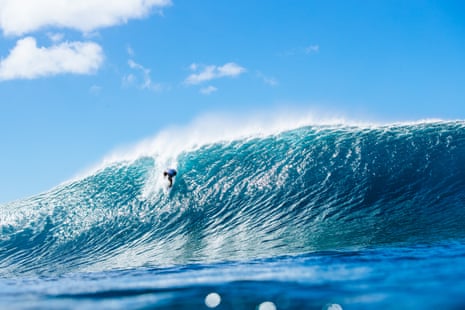
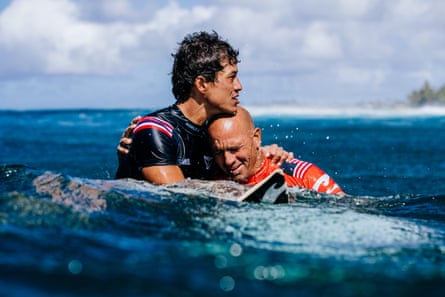
Slater’s Pipeline victory is the focus of the opening episode of season two of Make or Break, a new series streaming on Apple TV+. It is an emotional tribute to the king of surfing in the twilight of his career, offering raw insight into Slater’s run to the final. Rewatching the episode hit hard, Slater admits. “I watched it with my girlfriend – I actually wanted to watch it by myself without anybody, but she and I watched it and we both cried watching it.”
Make or Break follows in the footsteps of Drive to Survive, Netflix’s hit series on Formula One. The shows are made by the same production company, Box to Box, and World Surf League (WSL) executives are hoping the Drive to Survive “effect” will hit surfing too. It may be too early to assess the cultural legacy, but Slater says that the pandemic has certainly increased the sport’s popularity.
“During Covid in the past couple of years it seems like everyone in the world started surfing – I can’t find a wave to myself,” he says. “Every beach I like to go to is super crowded now. I don’t know if [Make or Break] will have the same effect [as Drive to Survive] or not – maybe it will give a lot more people an appreciation of what we do and the committed nature of our lives to this sport. We don’t make the same money as golfers or baseball players or basketball guys. This sport, our sport, is more of a passion play. We surf for the love of it.”
after newsletter promotion
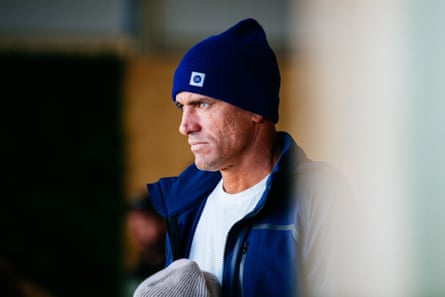
Sooner or later, even this illustrious career must come to an end. Slater knows as much. “I’ve kept myself in good shape and competition has been my outlet,” he says. “The past couple of years I’ve sort of just been hanging around to be honest, I haven’t been competing for a world title. I’ve been hanging around to see if I can get into the next Olympics.”
Slater says that if he qualifies for Paris 2024, with the surfing contest to be held at the famed Teahupo’o break in Tahiti, he will retire. Slater has won five world tour events in Teahupo’o and, despite his age, he would be a strong contender to win the gold medal. It would be a fitting way to go out – the only major surfing accolade Slater has not collected during his glittering career (surfing was added to the Olympic roster for the Tokyo Games).
As Slater winds down his career, it’s unlikely he will leave the sport entirely. He is involved in the Kelly Slater Wave Company that hosts a stop on the World Surf League. “Wave pools are an obvious part of the future,” Slater says. He suggests there might be scope for more reform to the World Surf League format – potentially moving away from having the final, contested by the top five male and female surfers at the end of the season, in the same spot each year.

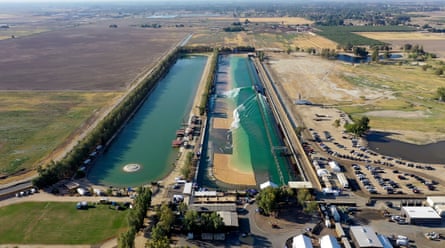
Slater has also courted controversy in recent years, engaging in debate on social media around the Covid-19 vaccination and vaccine mandates. At one stage it was unclear if he would be permitted to compete in Australia, where vaccination was a requirement for international visitors; he subsequently hinted that he had been vaccinated and ultimately did contest the Australian leg of last year’s WSL season.
Now into the fourth decade of his competitive surfing career, Slater has seen it all. He has been the continuity among a time of great change – a golden era of Australians, followed by the Brazilian storm; fearless tube-riding supplemented by gravity-defying aerial moves. As he prepares to bow out in the next 18 months, Slater leaves the sport at an interesting moment – without an unrivalled force at the top. Four men have shared the past five titles between them. Brazil’s Gabriel Medina may have won two, but his dominance hardly matches Slater’s prime – the veteran won five titles in a row in the 1990s, and five titles in seven years between 2005 and 2011.
“To pull ahead of everyone in all conditions is the challenge for the top guys,” Slater says. The greatest of all time is philosophical as he reflects on the current generation, and a new generation already knocking on the door. “Medina has been able to prove he can step up to any and all conditions and win, John John [Florence] has done the same thing. “Maybe John has just struggled in the smallest of waves, where Medina excels, but John is amazing in the big giant waves where Gabe doesn’t stand out.”
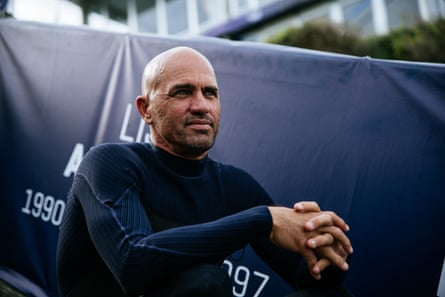
Slater’s mind lingers on Jack Robinson, a 25-year-old Australian who has often been called the next Kelly Slater. “Jack is an interesting one because he’s not scared of anything – he’ll surf any wave than anyone else will surf, but he’s also winning in small waves – which a lot of us didn’t expect, to be frank,” Slater says. “He figured out how to work the game to his advantage in almost every situation. It’s been uncanny to watch it fall into place for him.”
Whoever takes Slater’s mantle as the dominant force in the decade to come, it seems unlikely that anyone will go on to match the American’s enduring presence at the top of world surfing. Slater is 51 – and he’s not done yet.
Season two of Make or Break is now streaming on Apple TV+
